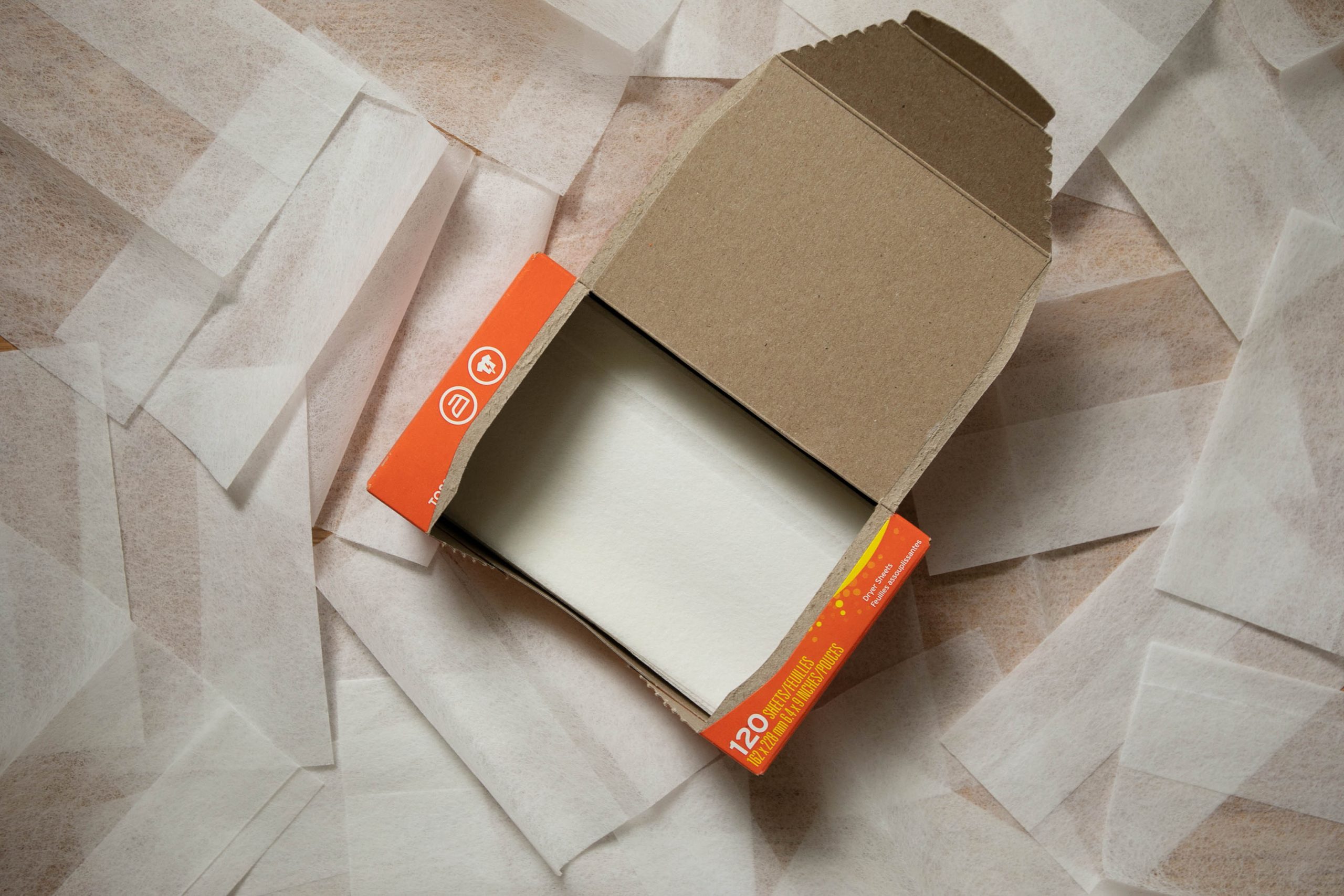Dryer sheets are getting a lot of attention lately. If you're concerned about dryer sheet safety, we break down the available info.

Are Dryer Sheets Bad for the Environment?

Do you use dryer sheets? People around the world spent $12.7 billion dollars on dryer sheets last year, so it’s clear many of us do. These ubiquitous little sheets take care of static, impart a cheery fragrance and “soften” our clothes (more on that later).
And even though there’s evidence younger generations are ditching liquid fabric softener, a full three-quarters of Millennials and Gen Zers continue to reach for dryer sheets.
But today’s environmental- and health-conscious consumer wants to know: Are they good for you? Are they safe? There’s lots of conflicting information out there. What do the experts say? Here’s what you need to know.
On This Page
Are Dryer Sheets Bad for You?
No. But if you’re sensitive to fragrances, you may want to purchase unscented ones or make your own.
Fragrances in products not applied to the body directly are regulated by the Consumer Products Safety Commission (CPSC). Because fragrances are often trade secrets, the individual chemicals are not required to be listed on the label. Go to your laundry room and check — you’ll likely see generic “fragrance” listed.
Dryer sheets do give off volatile organic compounds (VOCs) when heated, according to an oft-cited study. Your dryer vent releases those VOCs into the air.
But experts at the Center for Research on Ingredient Safety (CRIC) at Michigan State University say this doesn’t mean your health is at risk. Exposure levels also matter. Unless your dryer vent empties into your house (which it shouldn’t), your exposure to these compounds is low.
As for the fabric softeners and other ingredients, dryer sheet non-fragrance chemicals are regulated by the Environmental Protection Agency (EPA). The CRIC notes current scientific research doesn’t show any negative health impacts from dryer sheets.
Are Dryer Sheets Bad for the Environment?
Yes. Most dryer sheets are made from non-recyclable polyester, which means they go straight from your dryer to the landfill.
“While some dryer sheets are made from natural or cellulose fibers and can be recycled, most dryer sheets on the market are disposable products,” says Frej Lewenhaupt, co-founder and CEO at Steamery. One company, Method, makes a compostable version out of paper.
Are Dryer Sheets Bad for Your Dryer?
Possibly.
When you pull dryer sheets out of the box, they feel a little waxy, right? That’s the softening agent, which melts in the dryer and coats your clothes as they tumble dry.
It doesn’t just coat your clothes, though. “Some can leave a coating of residue inside the dryer which can affect its performance and ability to properly dry,” Lewenhaupt says. Inefficient dryers take longer to dry clothes and require more energy to do it.
Are Dryer Sheets Bad for Your Clothes?
Yes. Dryer sheets coat the fibers with a lubricant that creates the illusion of softer clothes. This comes with costs, especially to certain garments.
Here are the clothes most affected by dryer sheet residues, according to Whirlpool:
- Athletic wear: Dryer sheets counteract the moisture-wicking ability of these fabrics.
- Kids’ pajamas: Dryer sheet residues reduce flame resistance.
- Water-repellent clothing: Fabric coated with dryer-sheet softeners loses its ability to shed water.
- Towels: While not clothing, towels lose absorbency with repeated fabric softener use, including dryer sheets.
If you’ve been using dryer sheets and want to remove the residues left behind on your clothing, try laundry stripping. This TikTok trend actually works. Patric Richardson, aka the Laundry Evangelist, says if you switch to clean-rinsing soap flakes for a bit, it has the same effect.
Alternatives to Dryer Sheets
Whether you’re sensitive to fragrances or you just don’t like all the waste, you’ll be happy to know dryer sheets aren’t even necessary.
Instead of disposable dryer sheets, Lewenhaupt recommends reusable wool dryer balls. “Wool dryer balls make the air circulate more evenly in the dryer,” Lewenhaupt says, “which reduces drying time by 10% to 30% and prevents static cling.”
Incredibly, these 100% natural wool dryer balls last three to five years, depending on how often you use them. “It’s a clever, cost-effective and sustainable alternative to dryer sheets, fabric softeners and plastic dryer balls,” Lewenhaupt says. All that tumbling action softens your clothes, too.
Richardson adds one more suggestion: Make your own dryer ball from aluminum foil. This neat trick takes care of static and pet hair, and couldn’t be cheaper.
Grab the roll of aluminum foil from your kitchen drawer, rip off a sheet about a yard long and crumple it into a tennis-ball-sized wad. Throw it in the dryer. This simple solution will last 60 loads or more. When it shrinks to the size of a walnut, toss it and start over.




















